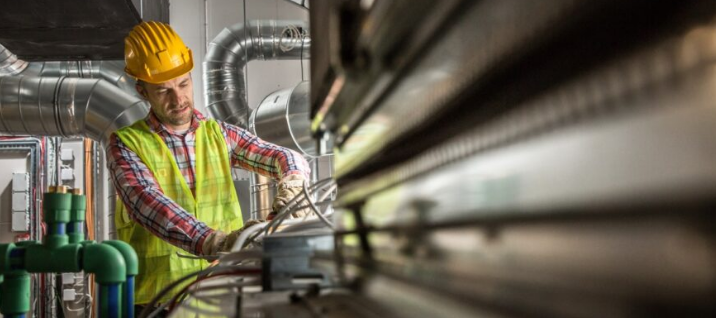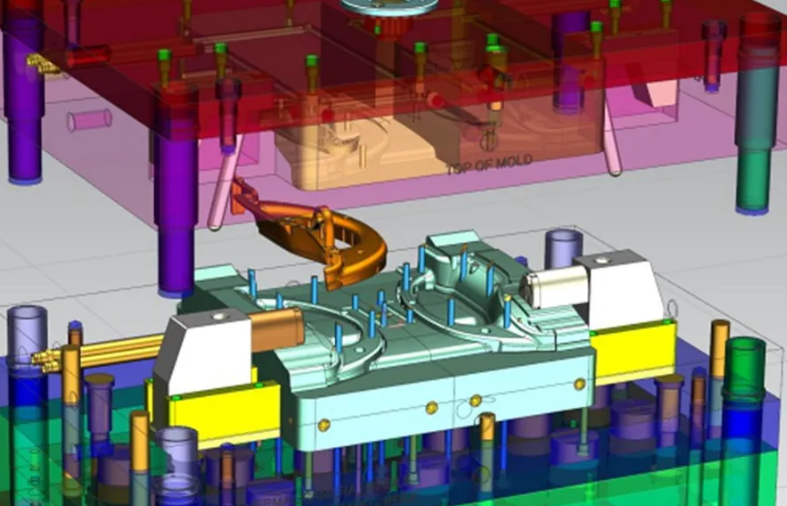Temperature control is crucial in injection molding to melt plastic and ensure proper flow and part quality.
Fundamentals of Temperature Control in Injection Molding
Understanding temperature control in injection molding is crucial for producing high-quality plastic products. The behavior of plastic during molding and the optimal temperature ranges for various materials are key factors in this process.

Impact of Temperature on Plastic Behavior
Controlling the temperature in injection molding profoundly affects the flow, cooling, and final properties of the plastic.
Flow Characteristics: At the right temperature, plastics attain the necessary viscosity for effective molding. For instance, too low a temperature can lead to increased viscosity, making the plastic hard to inject and fill the mold properly.
Cooling and Solidification: After injection, the plastic must cool and solidify at the right rate. Rapid cooling might lead to stresses and warping, while slow cooling can increase cycle times, impacting efficiency.
Physical Properties: The final mechanical properties, like strength and flexibility, are significantly influenced by the temperature during molding.
Maintaining optimal temperature is essential for ensuring the desired quality and characteristics of the final product.
Optimal Temperature Ranges for Common Materials
Different plastics require specific temperature ranges for optimal molding.
Polyethylene (PE): Typically molded between 180°C and 280°C.
Polypropylene (PP): Optimal molding occurs between 200°C and 300°C.
Polystyrene (PS): Usually molded at temperatures between 180°C and 280°C.
ABS: Best molded within the range of 200°C to 280°C.
Choosing the right temperature range for each material is crucial to balance flow properties and cooling times, thereby impacting both the quality of the product and the efficiency of the production process.
For more detailed information on temperature control in injection molding, the Injection Molding page on Wikipedia provides comprehensive insights.
Temperature’s Influence on Injection Molding Quality
Temperature plays a pivotal role in determining the quality of products manufactured through injection molding. It significantly impacts surface finishes and the material strength of the final product.
Effects on Surface Finish and Aesthetics
Proper temperature control is essential for achieving a superior surface finish and aesthetic quality in injection molded products.
Surface Smoothness: Optimal temperatures ensure smooth flow of plastic, reducing surface imperfections.
Gloss and Texture: Temperature affects the glossiness and texture of the surface. For instance, higher temperatures can lead to a glossier finish, while lower temperatures might result in a matte surface.
Color Consistency: Maintaining consistent temperatures prevents color streaks and ensures uniform color distribution throughout the product.
Ensuring the right temperature is key to achieving the desired surface quality and aesthetic appeal.
Relationship Between Temperature and Material Strength
The strength and durability of injection molded products are closely tied to the temperature conditions during the molding process.
Structural Integrity: Higher mold temperatures can improve the strength of the product by allowing better polymer chain alignment.
Stress Reduction: Proper cooling rates minimize internal stresses, which can otherwise weaken the product.
Defect Prevention: Incorrect temperatures can lead to defects like warping or brittleness, adversely affecting the strength of the product.
Balancing temperatures throughout the injection molding process is crucial for ensuring the structural integrity and longevity of the final product.
For more insights into the technical aspects of injection molding, the Injection Molding page on Wikipedia offers comprehensive information.
Managing Temperature in the Injection Molding Process
Effective temperature management in injection molding is crucial for producing high-quality parts. It involves precise temperature regulation and a thorough understanding of the impact of cooling systems on cycle times, supported by data-driven approaches.

Techniques for Precise Temperature Regulation
Precision in temperature control is achieved through advanced technologies and specific methodologies.
Advanced Sensors: Modern sensors can detect temperature variations within a range of ±0.5°C, allowing for immediate adjustments.
Automated Control Systems: These systems can respond to temperature fluctuations within milliseconds, ensuring consistent mold temperatures.
Material-Specific Temperature Profiles: For example, ABS plastic requires a mold temperature around 40-80°C, while Nylon might need a temperature around 70-110°C for optimal results.
Accurate temperature regulation relies on integrating high-precision sensors and tailoring settings to each material’s needs.
Cooling Systems and Their Impact on Cycle Time
The cooling phase significantly affects both the part quality and the efficiency of the injection molding process.
Cooling Time Proportion: Cooling can account for up to 60% of the total cycle time in injection molding.
Cooling System Design: Efficient designs can reduce cooling times by up to 20%, enhancing productivity. For instance, a well-designed water cooling system can maintain temperature within ±1°C of the desired setting.
Production Efficiency Impact: Shortening cooling times by just 10% can lead to an overall increase in production efficiency by about 5-10%, depending on the part complexity and material used.
Optimized cooling systems play a vital role in reducing cycle times while ensuring part quality, significantly impacting production throughput and costs.
For more detailed technical information, the Injection Molding page on Wikipedia offers extensive insights.
Temperature-Related Challenges and Solutions in Injection Molding
Managing temperature correctly is crucial in injection molding to avoid defects and maintain consistent product quality. Here’s an organized approach to understanding temperature-related challenges and their solutions, detailed in table format.
Identifying and Addressing Temperature-Induced Defects
| Defect Type | Cause | Solution | Impact on Cost/Production |
|---|---|---|---|
| Warping | Uneven cooling or excessive temperature | Improve mold design and cooling system | Reducing warping decreases waste, saving costs |
| Sink Marks | Insufficient cooling or high temperature | Optimize cooling time and temperature settings | Prevents defects, enhancing product quality |
| Burn Marks | Too high temperature | Lower the temperature and increase injection speed | Avoids material degradation, improving yield |
Proactively addressing these defects can significantly enhance the quality and consistency of injection molded products.
Strategies for Maintaining Consistent Temperature
| Strategy | Description | Benefit | Operational Impact |
|---|---|---|---|
| Advanced Control Systems | Use of PID controllers and sensors | Maintains temperature within a tight range (±1°C) | Increases production efficiency and reduces scrap rates |
| Regular Maintenance | Routine checks and calibrations | Ensures equipment runs at optimal settings | Prevents downtime, improving overall throughput |
| Material-specific Profiles | Custom temperature profiles for different materials | Tailors process to material properties | Optimizes cycle times and energy usage for each material |
Implementing these strategies ensures a more stable and efficient injection molding process, leading to higher quality products and more cost-effective operations.
For additional insights and technical details, the Injection Molding page on Wikipedia offers a wealth of information.




